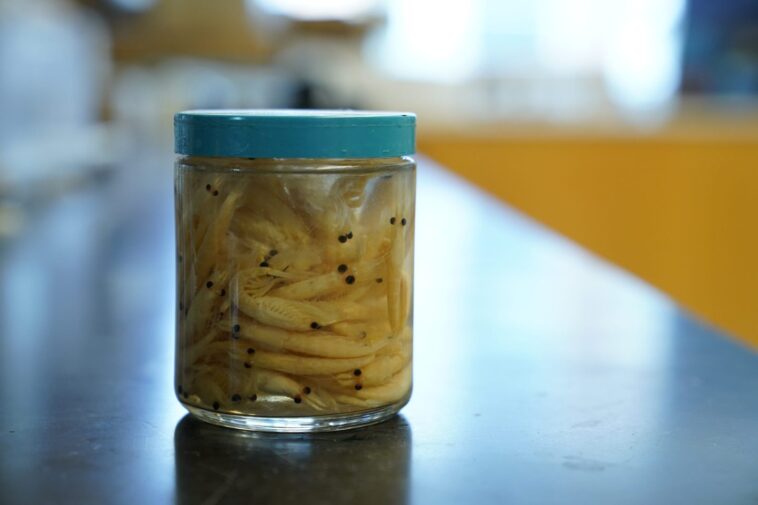A proposal to limit the catching of multiple fish species in Tasmania until their populations reach a certain threshold has met fierce resistance from the region’s primary fishing association. Independent candidate from Franklin, Peter George, desires to establish a rule that biomass should be ‘at or above 50%’ to enhance the productivity of fisheries. Alongside this, he urges for immediate reporting of every catch, making it obligatory for fishermen to keep a record of not just the fish they retain, but also those that they discard.
Jane Gallichan, the CEO of TARFish, expressed vehement opposition to the proposed policy which she deemed unfeasible. According to her, it would inevitably lead to the suspension of several major fisheries such as sand flathead, rock lobster, abalone, calamari, and striped trumpeter. ‘These embody the majority of the fish types that we chase, especially in the south-east,’ she retorted.
Gallichan characterized the policy as a glaring danger to the way of life in Tasmania. In addition, she emphasized its potential impact on countless jobs as well as regional communities that are upheld by recreational fishing. Her concerns reflect the high stakes of the policy proposal and its potential ripple effects on the fishing ecosystem and the economy at large.
Eric Abetz, a Liberal candidate running for Franklin, shared Gallichan’s criticisms. In his view, this alleged ‘radical conservationist policy’ risks dismantling Tasmania’s esteemed fishing sectors, thereby hindering people from fishing for generations to come. He warned about the potentially catastrophic aftermath of implementing a universal 50% biomass level.
Abetz was doubtful about the feasibility of any commercial or leisure fishing activity reaching close to the targeted biomass figure. He explained, ‘Aiming for approximately 40% to 50% is currently our objective and we are continuously working to restore many species to these levels’. His comments showcase skepticism towards George’s policy terms and reflect broader concerns about the realistic attainment of such biomass objectives.
Nevertheless, George staunchly defended his policy, asserting it as beneficial to both recreational and commercial fishing. He downplayed Abetz’s remarks as ‘plainly incorrect’. Referring to the Liberal candidate’s remarks, he said, ‘He is ardently endorsing the expansion of large-scale salmon farming in Storm Bay, which happens to be the principal threat to marine life and fishing within state waters’.
George accused Abetz of siding with the ‘salmon magnates’. He made an audacious claim that the salmon industry had both major political parties – Labour and Liberal – under their influence and that they dreaded the election of independent candidates like himself. His attack on Abetz underlines the perceived influence and threats posed by key industry players on political decision-making and regional sustainability. He is positioning himself as an independent challenger to what he sees as established, harmful practices.
The ongoing debate reflects the complexities involved in fisheries management, the diverging interests of different stakeholders, and the political aspects that influence policy decisions. It brings forth critical questions on the preservation of Tasmania’s marine life, economic considerations for the fishing industry, and the balance between these potentially conflicting priorities.
It furthermore illustrates the intense disagreements over the establishment of a biomass benchmark for fisheries. Balancing population recovery with fishermen’s livelihoods and regional economic health remains a stark challenge. These contrasting views embody the multiple facets of the issue, with each party advocating for their perception of an optimal solution.
Stakeholders such as recreational and commercial fishers, political candidates, and marine protection advocates vary greatly in their views and projected outcomes. The ongoing discourse mirrors the fragile balance between ecological safeguarding and maintaining a robust fishing industry. The impact of this argument extends far beyond policy-making, potentially shaping the future of fisheries management in Tasmania.
While strong opposition exists, supporters view the policy as an opportunity to strengthen Tasmania’s fisheries in the long term. They argue the proposal is forward-thinking, placing sustainable fishing practices at the core of industry operations.
Notwithstanding strong defences, critics argue that the policy may have drastic consequences, implicitly threatening the grand vision of sustainable fisheries in Tasmania. The debate therefore revolves around finding a middle ground where both, ecosystem integrity and economic viability, can be maintained simultaneously.
The discussions arising from this issue serve as a microcosm of the larger global struggle for marine conservation and sustainable fishery practices. Ultimately, the resolution of this contentious proposal will weigh the need for marine resource protection against the economic realities of a lucrative industry, shaping the direction of marine policy in Tasmania and potentially offering insights for other regions grappling with similar challenges.

